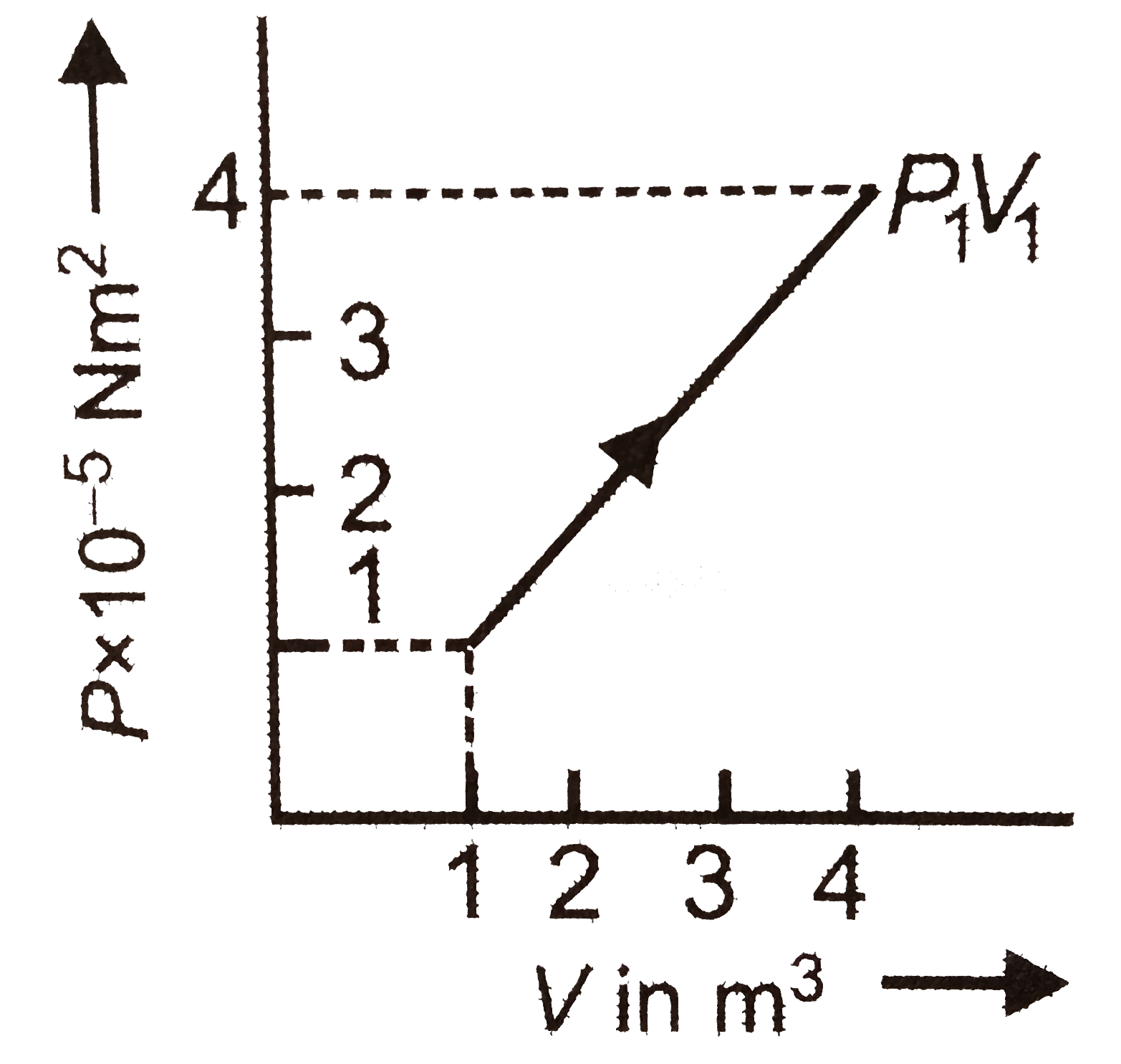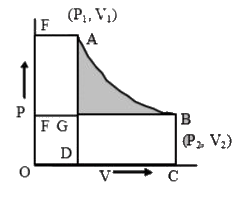Ideal gas undergoes an adiabatic change in its state from (P1V1,T1) to(,P2,V2T2). The work done (W) in the process is (n = number of moles, Cp and Cv are molar specific heats of gas)
W=n(T1−T2)CP
W=n(T2−T2)CV
W=n(T1+T2)CP
W=n(T1+T2)CV
The correct Answer is:B
Work done (W)=nR(T2−T1)γ−1
Since, CV=Rγ−1 ∴W=nCV(T2−T1).
Topper's Solved these Questions
- BOOK - ERRORLESSCHAPTER - THERMODYNAMICSEXERCISE - NCERT BASED QUESTIONS (ISOBARIC AND ISOCHORIC PROCESS)10videos
THERMODYNAMICS
- BOOK - ERRORLESSCHAPTER - THERMODYNAMICSEXERCISE - NCERT BASED QUESTIONS (HEAT ENGINE, REFRIGERATOR AND SECOND LAW OF THERMODYNAMICS)35videos
THERMODYNAMICS
- BOOK - ERRORLESSCHAPTER - THERMODYNAMICSEXERCISE - NCERT BASED QUESTIONS (ISOTHERMAL PROCESS)16videos
THERMODYNAMICS
- BOOK - ERRORLESSCHAPTER - SURFACE TENSIONEXERCISE - ASSERTION & REASON11videos
SURFACE TENSION
- BOOK - ERRORLESSCHAPTER - THERMOMETRY, THERMAL EXPANSION AND CALORIMETRYEXERCISE - ASSERTION & REASON10videos
THERMOMETRY, THERMAL EXPANSION AND CALORIMETRY
Similar Questions
Assertion: When ideal gas expand from P1,V1,T1, to P2,V2,T2 two steps, and work done is high in which number of steps are high
Reason: Work is path functionView SolutionOne mole of a gas in the state A(P1,V1,T1) is subjected to adiabatic expansion to attain state B(P2,V2,T2). The work done by the gas is:
View Solution
Knowledge Check
- Question 1 - Select One
The work done in changing the state from (P0,V0) to (P1,V1) in the following system is :
 A−7.5×10−5JB−7.5×105JC−7.5×105ergD−7.5×10−5 erg
A−7.5×10−5JB−7.5×105JC−7.5×105ergD−7.5×10−5 erg - Question 2 - Select One
A gas expands under constant pressure P from volume V1 toV2The work done by the gas is
AP(V2−V1)BP(V1−V2)CP(Vλ1−Vλ2)DPV1V2V2−V1 - Question 3 - Select One
In an adiabatic process, the state of a gas is changed from P1,V1,T1,toP2,V2,T2. Which of the following relation is correct
AT1Vλ−11=T2Tλ−12BP1Vλ−11=P2Vλ−12CT1Pλ1=T2Pλ2DT1Vλ1=T2Vλ2
One mole of hydrogen, assumed to be ideal, is adiabatically expanded from its initial state (P1,V1,T1) to the final state (P2,V2,T2). The decrease in the internal energy of the gas during this process will be given by
View SolutionAn ideal gas follows a process described by PV2=C from (P1,V1,T1) to (P2,V2,T2) (C is a constant). Then
View SolutionA gaseous system changes from state A(P1,V1,T1) to B(P2,V2,T2), B to C (P3,V3T3) and finally from C to A. The whole process may be called
View SolutionA gaseous system changes from state A(P1,V1,T1) to B(P2,V2,T2) to C(P3,V3,T3) and finally from C to A. The whole process may be called :
View SolutionAn ideal gas is transformed from state A(P1,V1) to the state B(P2,V2) through path AB. In this process the work done by the gas is
 View Solution
View Solution

